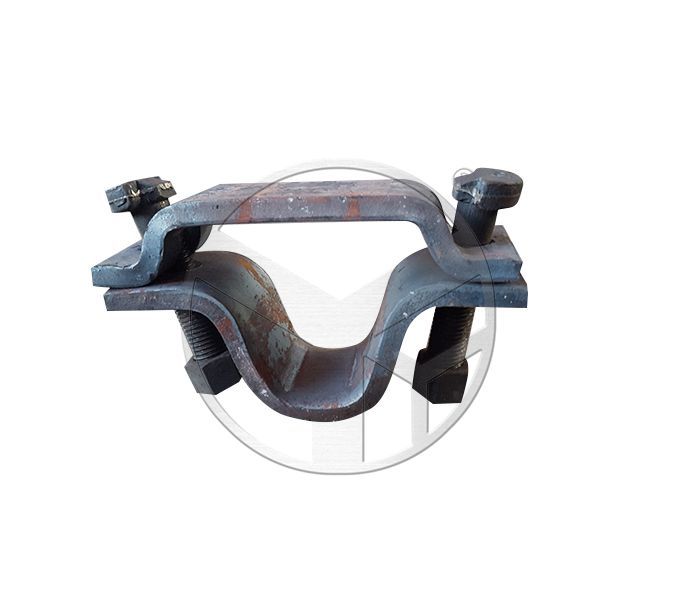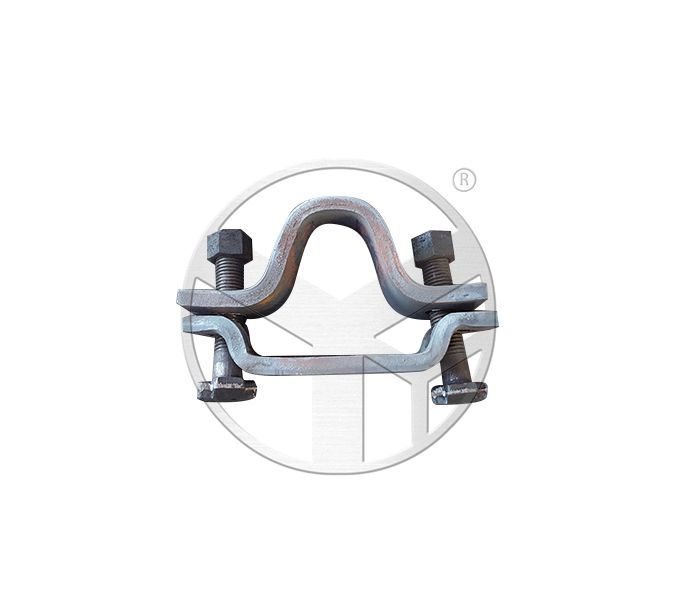Railway fastening system - how much do you know?
A railroad fastener system is a set of railroad track parts designed for fixing rails and sleepers. The role of the fastener system is to maintain the rail gauge and prevent vertical and horizontal movement of the rail relative to the sleeper position. The fastener system usually consists of rail spacers, spikes, clips, rail anchors, or other fasteners. But many people are not clear about what the role of the railroad fastener system can play. What are the small parts included in the railway fastener system?

Do the following five aspects explain the role of the railway fastener system can play?
The role of railway fasteners.
1. firmly fix the rail in the rail seat.
2. limit the rotation of the rail around the outer edge of the rail foot.
3. Minimize the longitudinal movement of the rail through creep and thermal forces.
4. Assists in maintaining rail gauge.
5. Will not cause damage to the rail.
Features of railroad fasteners
1. Good anti-fracture performance
All-steel cold-pressed national standard railroad fasteners have advanced structure, and all steel plate cold forming, strength, and toughness exceed national and international standards, eliminating the possible accidents of fastener fracture and scaffold collapse.
2、Strong antirust performance
Galvanized anti-corrosion treatment can greatly improve the antirust performance so that the service life of the new fasteners exceeds that of the old fasteners, overcoming the problems of the old fasteners and eliminating hidden dangers. These can ensure and improve the overall mechanical performance and safety performance.
3. Fast and convenient
Structurally optimized railroad fasteners are lightweight, beautiful, and comfortable. They can reduce the labor intensity in the working process.
Types of rail fasteners
1. Rail fasteners
Rail fasteners are important rail fasteners, playing the role of fastening the rail on the railroad sleeper. The role of the rail clip is as follows.
Rail clamps produce clamping force and transfer it to the rail.
The rail clip maintains a reliable connection between the two rails.
The rail clip maintains the integrity of the rail as much as possible.
The rail clip absorbs the vibration generated by the locomotive.
There are various types of rail clamps, such as Type E, SKL, KPO, Nabla, etc. Generally, use the rail buckle system to name the included rail clips, such as the E-type rail buckle system, SKL rail buckle system, KPO rail fastening system, etc.
2. Pulling plate
The sleeper plate, also known as the bottom plate or base plate, is placed between the rail and the sleeper. Usually, it is fixed on the sleeper by a railroad spike or railroad bolt through the hole on the pad. The pad plate is used to disperse the load and keep the rail gauge.
3. Spike
Spikes and spiral spikes are the two typical types of railroad spikes. They are both used to fix the rail to the railroad sleeper. More importantly, railroad spikes help to maintain the gauge and keep the railroad safe together with other railroad fasteners.
Yongyang specializes in manufacturing railway accessories. To ensure higher quality, our railway fasteners have undergone many critical tests. We can manufacture other types of high-speed railroad fasteners according to customers' requirements. Contact us for more information.
This article mainly explains the role, characteristics, and types of railway fastener systems, hope it will be helpful to you, if you do not know anything, you can contact us, Yong Yang!

Do the following five aspects explain the role of the railway fastener system can play?
The role of railway fasteners.
1. firmly fix the rail in the rail seat.
2. limit the rotation of the rail around the outer edge of the rail foot.
3. Minimize the longitudinal movement of the rail through creep and thermal forces.
4. Assists in maintaining rail gauge.
5. Will not cause damage to the rail.
Features of railroad fasteners
1. Good anti-fracture performance
All-steel cold-pressed national standard railroad fasteners have advanced structure, and all steel plate cold forming, strength, and toughness exceed national and international standards, eliminating the possible accidents of fastener fracture and scaffold collapse.
2、Strong antirust performance
Galvanized anti-corrosion treatment can greatly improve the antirust performance so that the service life of the new fasteners exceeds that of the old fasteners, overcoming the problems of the old fasteners and eliminating hidden dangers. These can ensure and improve the overall mechanical performance and safety performance.
3. Fast and convenient
Structurally optimized railroad fasteners are lightweight, beautiful, and comfortable. They can reduce the labor intensity in the working process.
Types of rail fasteners
1. Rail fasteners
Rail fasteners are important rail fasteners, playing the role of fastening the rail on the railroad sleeper. The role of the rail clip is as follows.
Rail clamps produce clamping force and transfer it to the rail.
The rail clip maintains a reliable connection between the two rails.
The rail clip maintains the integrity of the rail as much as possible.
The rail clip absorbs the vibration generated by the locomotive.
There are various types of rail clamps, such as Type E, SKL, KPO, Nabla, etc. Generally, use the rail buckle system to name the included rail clips, such as the E-type rail buckle system, SKL rail buckle system, KPO rail fastening system, etc.
2. Pulling plate
The sleeper plate, also known as the bottom plate or base plate, is placed between the rail and the sleeper. Usually, it is fixed on the sleeper by a railroad spike or railroad bolt through the hole on the pad. The pad plate is used to disperse the load and keep the rail gauge.
3. Spike
Spikes and spiral spikes are the two typical types of railroad spikes. They are both used to fix the rail to the railroad sleeper. More importantly, railroad spikes help to maintain the gauge and keep the railroad safe together with other railroad fasteners.
Yongyang specializes in manufacturing railway accessories. To ensure higher quality, our railway fasteners have undergone many critical tests. We can manufacture other types of high-speed railroad fasteners according to customers' requirements. Contact us for more information.
This article mainly explains the role, characteristics, and types of railway fastener systems, hope it will be helpful to you, if you do not know anything, you can contact us, Yong Yang!

评论
发表评论